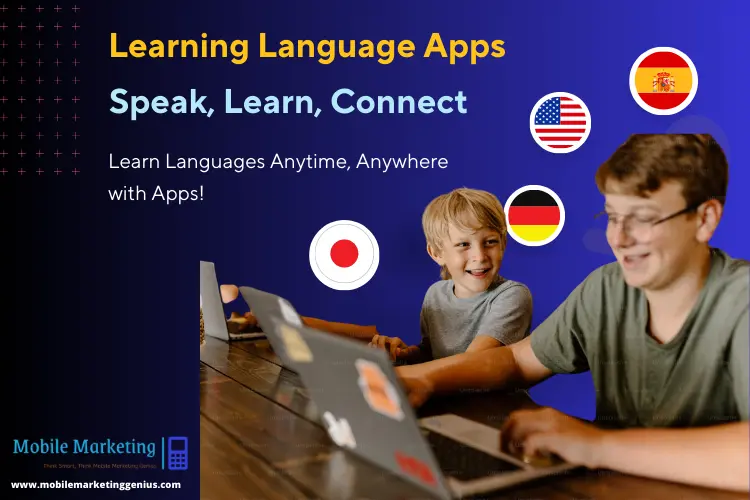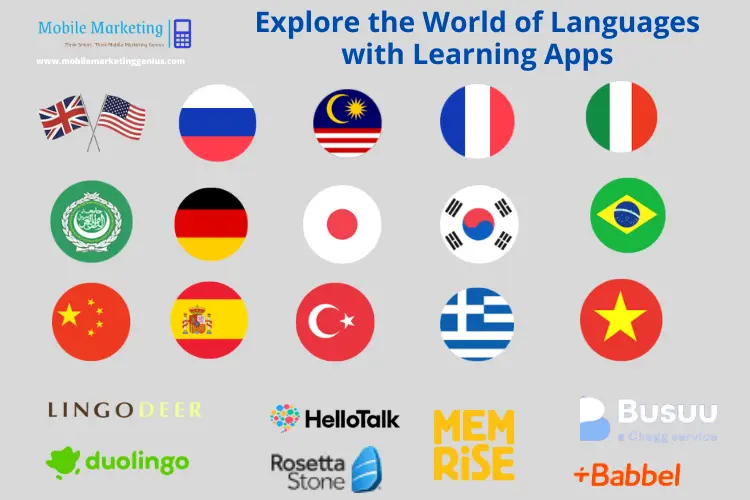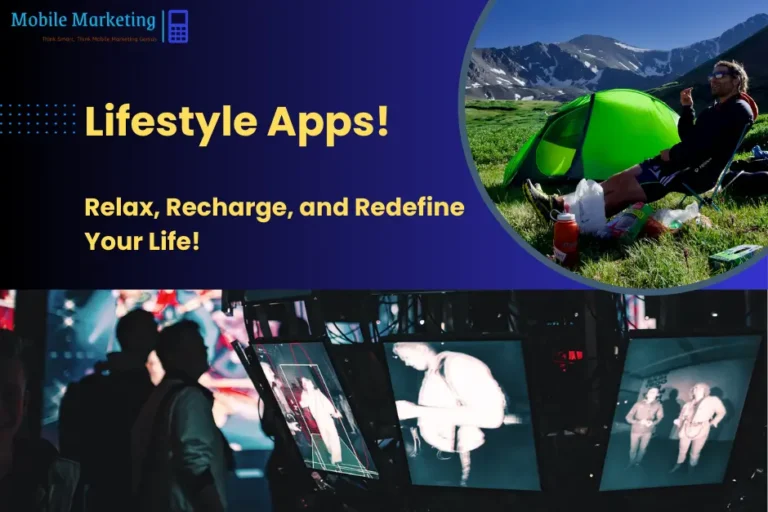Language Learning Apps: A Comprehensive Guide for Modern Learners

Language learning has undergone a remarkable transformation in the digital age, thanks to the rise of mobile apps. What once required hours in a classroom or access to expensive tutors can now be achieved through interactive, gamified, and AI-powered platforms accessible on your smartphone. Language learning apps have become indispensable tools for millions of people worldwide, catering to students, professionals, and travelers seeking to communicate effectively in foreign languages.
The appeal of these apps lies in their flexibility, affordability, and ability to adapt to diverse learning needs. Whether you’re practicing conversational phrases, mastering grammar, or building a robust vocabulary, these apps provide personalized pathways to achieve your goals. Moreover, they leverage cutting-edge technology like AI, voice recognition, and gamification to make the learning process engaging and intuitive.
In this article, we will explore the fascinating evolution of language learning apps, from their early days to the sophisticated tools available today. We’ll also highlight key features that make these apps effective and recommend some of the most popular platforms for mastering major global languages. Whether you’re a beginner or looking to refine your skills, this guide will serve as a starting point to unlock the power of learning apps.
Table of Contents
The Evolution of Language Learning: A Brief History
Language learning has always been a cornerstone of cultural exchange, education, and personal growth. Traditionally, it was rooted in face-to-face instruction, textbooks, and immersion experiences. Students relied on classroom environments where native speakers and grammar drills were the primary methods for acquiring new languages. While effective for many, these approaches were often time-consuming, expensive, and inaccessible to those without local resources.
The shift toward digital solutions began with the introduction of audio-based programs like Pimsleur and Rosetta Stone in the late 20th century. These programs offered a more flexible, self-paced approach to learning, focusing on listening and repetition. By the early 2000s, e-learning platforms emerged, providing structured lessons accessible through computers. This marked the beginning of an era where language learning was no longer confined to physical spaces.
The advent of smartphones revolutionized the field further, giving rise to mobile apps that made language learning truly portable and interactive. Early apps like Duolingo (launched in 2011) brought gamification into the mix, making learning fun and engaging with point systems, levels, and streaks. Platforms like Babbel and Busuu introduced AI-driven personalization, adapting lessons to each learner’s progress and goals.
Today, language learning apps integrate cutting-edge technologies like artificial intelligence, augmented reality, and speech recognition. These tools enhance the user experience by providing instant feedback, real-time translation, and immersive cultural insights. The inclusion of gamified challenges, community forums, and live tutoring sessions has transformed learning into a holistic and accessible experience.
From humble beginnings to AI-powered innovations, the evolution of language learning reflects a shift toward inclusivity, adaptability, and convenience. Modern apps empower users to learn anytime, anywhere, breaking barriers to education and enabling people across the globe to connect through language.
Key Features of Language Learning Apps
Language learning apps have redefined how people acquire new languages by offering innovative features tailored to modern learners. These apps combine technology, user-centered design, and pedagogical principles to create engaging, effective, and convenient learning experiences.
One standout feature is gamification, which transforms learning into a fun and rewarding process. Apps like Duolingo and Memrise use game-like elements such as points, streaks, leaderboards, and badges to keep learners motivated and consistent. This interactive approach helps combat the boredom often associated with traditional study methods.
Another key feature is AI-driven personalization, which customizes lessons based on the user’s progress, goals, and performance. Platforms like Babbel and Busuu use adaptive learning algorithms to identify areas of weakness and suggest tailored exercises, ensuring efficient skill development.
Multimedia content is another essential aspect of these apps. By incorporating audio, video, and interactive exercises, apps cater to different learning styles, making it easier for users to grasp pronunciation, grammar, and cultural nuances. Speech recognition technology, offered by apps like ELSA Speak, allows users to practice speaking and receive real-time feedback on pronunciation accuracy.
Community and social features are also integral. Many apps, such as HelloTalk and Tandem, enable users to connect with native speakers for language exchange, enhancing conversational skills in a real-world context. Some even include live tutoring sessions for a more personalized experience.
Additionally, offline access is becoming a must-have feature, allowing learners to download lessons and practice on the go without requiring an internet connection.
These key features ensure that language learning apps not only make education accessible but also enjoyable and effective, catering to a wide variety of learners with different goals and schedules. By integrating these tools into their daily lives, users can make steady progress toward fluency.
Popular Language Learning Apps for Key Languages

1. Duolingo
- Gamification-focused app with bite-sized lessons.
- Covers over 40 languages, including popular ones like Spanish, French, and Japanese.
- Features streaks, leaderboards, and rewards to keep learners motivated.
- Free with optional premium features for an ad-free experience.
2. Rosetta Stone
- Immersion-based learning focusing on listening, reading, and speaking.
- Ideal for building foundational skills in languages like French, German, and Italian.
- Uses a step-by-step approach to simulate natural language acquisition.
- Offers speech recognition to improve pronunciation.
3. Babbel
- Tailored for conversational skills and practical usage.
- Offers courses for 14 languages, including Spanish, German, and Italian.
- Includes cultural context in lessons to enhance real-world communication.
- Subscription-based with short, manageable lesson formats.
4. Busuu
- Combines structured lessons with community learning.
- Features feedback from native speakers within its community.
- Covers key languages like French, English, and Japanese.
- Premium plans offer grammar tips and downloadable content.
5. Memrise
- Focuses on vocabulary building through mnemonics and gamified content.
- Ideal for languages with complex alphabets like Mandarin and Arabic.
- Offers videos featuring native speakers to improve listening and comprehension skills.
6. HelloTalk
- A social learning app for practicing conversational skills.
- Connects users with native speakers for language exchange.
- Supports text, voice, and video chats in over 150 languages.
7. LingoDeer
- Specializes in Asian languages such as Korean, Mandarin, and Japanese.
- Offers a structured curriculum focusing on grammar and vocabulary.
- Includes offline access for flexibility in learning.
These apps cater to various learning needs, from beginner to advanced, offering unique features to help users master key languages effectively.
Table 1. Popular Language Learning Apps for Key Languages
| App Name | Download URL | Free / Cost | Online or Offline | Key Features |
|---|---|---|---|---|
| Duolingo | Duolingo | Free with premium options | Both | Gamified lessons, multiple languages, streaks |
| Rosetta Stone | Rosetta Stone | Subscription-based | Both | Immersion-based learning, foundational skills |
| Babbel | Babbel | Subscription-based | Both | Conversational focus, cultural context |
| Busuu | Busuu | Free with premium options | Both | Social learning, native speaker feedback |
| Memrise | Memrise | Free with premium options | Both | Vocabulary building, native speaker videos |
| HelloTalk | HelloTalk | Free with premium options | Online | Language exchange, chat with native speakers |
| LingoDeer | LingoDeer | Subscription-based | Both | Grammar-focused, structured for Asian languages |
This table summarizes popular language apps, their availability, cost structure, and features. Let me know if you’d like to add or edit any details!
Key Apps for Specific Languages
Language learning apps often excel in teaching specific languages by tailoring their content and features to meet the unique needs of learners. Here are some of the best apps for mastering popular languages:
1. English
- ELSA Speak: Focuses on improving pronunciation with AI-driven feedback. Ideal for non-native speakers preparing for exams like TOEFL or IELTS.
- LingQ: Offers an extensive library of real-world content to improve reading and listening skills.
2. Spanish
- Duolingo: Provides gamified lessons that are perfect for beginners and casual learners.
- Rocket Spanish: Focuses on practical conversation skills and includes cultural insights.
3. French
- Rosetta Stone: Uses immersion techniques to build strong foundational skills in grammar, vocabulary, and pronunciation.
- Mondly: Offers bite-sized lessons and speech recognition for practicing conversation.
4. German
- Babbel: Ideal for beginners, with lessons emphasizing conversational German and real-life scenarios.
- Pimsleur: Audio-focused learning for developing listening and speaking fluency.
5. Mandarin Chinese
- HelloChinese: Gamified lessons and speech recognition tailored for Mandarin learners.
- LingoDeer: Focuses on grammar and character recognition, with a clear progression for beginners.
6. Japanese
- WaniKani: Specializes in kanji learning through mnemonic techniques.
- Bunpo: Provides structured grammar lessons for learners at all levels.
7. Arabic
- Mondly: Offers a user-friendly interface with speech recognition for Arabic pronunciation.
- Drops: Focuses on vocabulary building with visual mnemonics and short, engaging sessions.
Each app leverages unique strengths to cater to specific aspects of learning these languages, making them excellent tools for achieving fluency.
Benefits of Using Language Learning Apps
Language learning apps have revolutionized the way people acquire new languages, offering numerous benefits that make them a preferred choice for millions worldwide.
1. Accessibility: With a smartphone or tablet, learners can access language lessons anytime and anywhere, eliminating the need for physical classrooms or scheduled sessions.
2. Cost-Effectiveness: Many apps provide free or affordable subscriptions compared to the high costs of traditional language courses or private tutors. This makes quality language education accessible to a wider audience.
3. Flexibility: Apps allow users to learn at their own pace, fitting lessons into their schedules. Whether it’s a five-minute session during a commute or an hour of focused learning, users have complete control.
4. Personalized Learning: Many apps, like Babbel and Busuu, use AI to tailor lessons based on the learner’s proficiency level, interests, and progress. This adaptive approach enhances learning efficiency.
5. Interactive and Engaging: Features like gamification, voice recognition, and multimedia content make learning enjoyable. Gamified apps like Duolingo turn lessons into fun challenges, while apps like Memrise incorporate real-world videos to boost comprehension.
6. Community Support: Apps like HelloTalk and Tandem connect learners with native speakers, enabling real-world conversational practice.
These benefits make language apps an effective, accessible, and enjoyable tool for achieving fluency.
Limitations of Language Apps
While language learning apps offer numerous advantages, they are not without limitations. One major drawback is the lack of cultural immersion—apps cannot replicate the depth of interaction and nuance gained from being surrounded by native speakers in real-life environments.
Additionally, many apps focus heavily on vocabulary and grammar but provide limited opportunities for real-world conversational practice, which is critical for fluency. Over-reliance on gamification can also lead to superficial learning, where users prioritize completing levels over mastering the language.
Some apps lack depth in advanced language skills, such as idiomatic expressions or nuanced writing. Furthermore, inconsistent discipline can hinder progress, as self-paced learning requires a strong commitment from users.
To overcome these limitations, combining apps with other resources like language exchange, cultural exposure, or formal instruction can help learners achieve a more holistic understanding of the language.
How to Choose the Right Language Learning App
Selecting the right language learning app depends on your goals, preferences, and language proficiency. Start by identifying your learning objectives—are you preparing for travel, improving conversational skills, or seeking full fluency?
Consider apps with features that match your needs. For vocabulary building, apps like Memrise excel, while platforms like Babbel are better for grammar and conversational skills. If speaking is your focus, look for apps with speech recognition like ELSA Speak.
Evaluate the cost and compare free vs. premium features. Many apps, such as Duolingo, offer robust free plans, while others require subscriptions for access to advanced lessons.
Check reviews and user testimonials to gauge the app’s effectiveness. Trial versions or free plans can help you determine if the app aligns with your preferences. Ultimately, the best app is one that keeps you motivated, fits your learning style, and supports consistent progress.
Tips for Maximizing the Use of Language Apps
To make the most of language learning apps, start by setting specific goals—such as learning 10 new words a day or completing a lesson daily. Consistency is key, so establish a routine that fits your schedule.
Combine app learning with other resources, like podcasts, books, or language exchange platforms, to strengthen your skills. Practice speaking regularly, even if only through speech recognition features in apps like HelloChinese or with native speakers via Tandem.
Use spaced repetition techniques to retain vocabulary and review past lessons to reinforce your knowledge. Engage with app communities for motivation and support, and don’t shy away from challenges or mistakes—they’re essential to progress.
Finally, keep learning enjoyable. Apps like Duolingo and Memrise are designed to make the process fun. By maintaining a positive mindset and diversifying your approach, you’ll achieve better results over time.
Future Trends in Language Apps
The future of language learning apps lies in harnessing emerging technologies to enhance user experiences. Artificial Intelligence (AI) will play a major role, offering hyper-personalized lessons, real-time pronunciation feedback, and adaptive learning pathways.
Virtual reality (VR) and augmented reality (AR) will enable immersive environments, allowing learners to practice conversations in realistic cultural settings without leaving their homes. Gamified storytelling and interactive simulations will become more prominent, making lessons engaging and memorable.
Expanding inclusivity is another key trend, with apps focusing on underserved languages and regions. Improved speech recognition and translation features will cater to diverse accents and dialects.
Additionally, apps will increasingly integrate cross-platform functionality, syncing progress across devices for seamless learning. These innovations, combined with greater accessibility and affordability, will continue to democratize language education, making it more inclusive, immersive, and effective than ever before.
Conclusion
Language learning apps have revolutionized how people acquire new languages, offering accessible, cost-effective, and engaging tools for learners worldwide. From gamified lessons to AI-driven personalization and social learning, these apps cater to diverse goals and skill levels.
However, no single app can address all aspects of language mastery. Combining apps with real-world practice, cultural immersion, and other resources creates a balanced learning experience.
As technology advances, the potential of language apps continues to grow. By embracing emerging trends like AI and VR, these tools promise even greater opportunities for learners.
Whether you’re a beginner or looking to refine your skills, language learning apps provide a flexible and effective pathway to fluency. Start exploring the possibilities today and take the first step toward mastering a new language.



